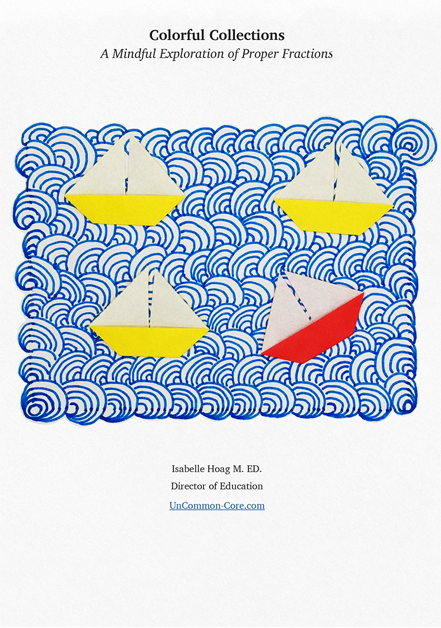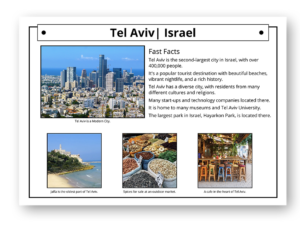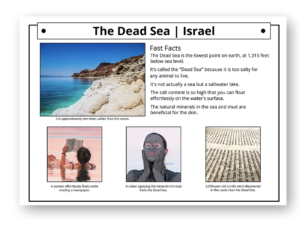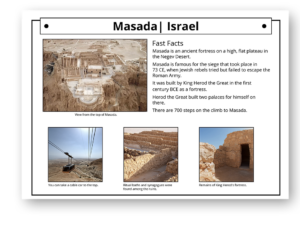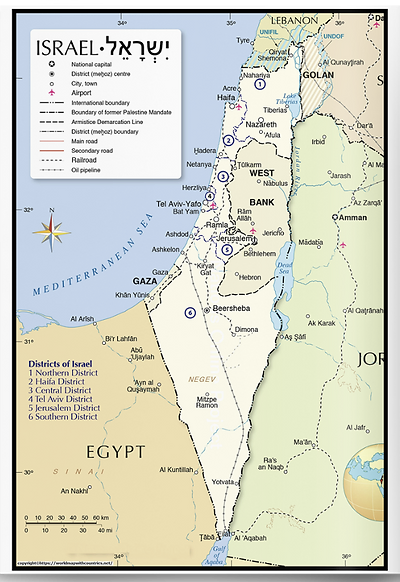
Make math sticky ~ Fit Math into Other Academic Subjects 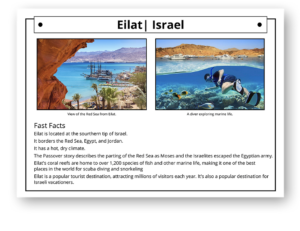
Math is part of any geography, social studies, or historical subject.
Sprinkling mathematical questions into lessons on other topics gives students more opportunities to use math during the school day. Math adds detail and important information to the topic being studied. Information from instructional materials often generates concrete examples of how math is used. Concrete examples help students remember mathematical facts and concepts.
Below are examples of how to incorporate mathematical calculations and ideas into a thematic unit in social studies, however, you can easily use these same strategies to add math to the content you actually teach in your classroom.
I’m sure that many of you already use these techniques naturally.
“Trip to Israel” Thematic Unit
Take a look at this Mock Trip to Israel: Passport Template found on hebrewworksheets.com. How you would incorporate math into the activities and lessons built around these materials? When the instructional materials engage students’ intellect and imagination, as these do, the mathematical questions and comments almost write themselves.
Look for Numbers in the Materials
The passport and boarding pass show how numbers are used to identify people or places.
Invite your students to look at the information shared on a passport or other travel documents:
- Age,
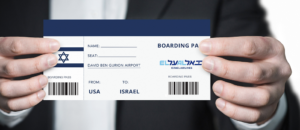
- Home address,
- Phone numbers,
- Passport ID number,
- Hotel address,
- Travel dates,
- bar codes,
- Seat numbers,
- Departure time,
- Arrival time . . .
(For a faux international passport, or educational ‘passports’ from other countries, try something like this product available on Twinkle.com at the time of writing.)
The information guides show numbers being used to compare and organize information.
- Jerusalem is the capital and largest city in Israel with 900,000 people living in it.
- Tel Aviv is the second largest city with a population of over 400,000 people.
It is so easy to ask your class, ‘How many more people live in Jerusalem than Tel Aviv?’
To add more math, follow up by asking, ‘What do we know about the populations of the third largest city?’ Or even, “There are 300,000 living in our city, St. Paul, MN, how does that compare with Jerusalem and Tel Aviv?’
These questions not only enrich your students’ mental math practice, but they help students organize the information they are learning about Israel. Comparing populations of Jerusalem and Tel Aviv gives students a chance to elaborate on the topic. Details about the content being studied help students recall the information they are learning.
- It takes 700 stair steps to reach Masada.
Help students imagine the climb by having them estimate how many stairs they use in a day. Actually count the stairs they use at school in one day, then calculate how many stairs they climb in a week, or an entire school year, and compare those figures to the hike to or from Masada.
Since only the USA , Liberia, and Myanmar are still using the imperial system of measurement, why not have your students recalculate that number from imperial measurements to metric units?
Alternatively, look for a way to put that number into a context your students understand. Buildings are typically measured in stories. One story is about 10(ish) feet. So, how many stories is the Dead Sea below sea level? About 132 stories! That’s taller than the Empire State Building!
Use years and dates to help students organize historical events.
Students of all ages are building a mental timeline of historical events. Depending on their age, their level of understanding time might be vague or detailed. It doesn’t take long to help students sequence historical events. A couple of extra questions or comments are enough in the context of a social studies class. Later, you can refer back to those comments and questions when talking about timelines or calendars in math class.
What happened at Masada in 73 CE?
During the class discussion, simply ask, “How long ago was that?” The answer will vary depending on the age of your students.
Most young children know that dinosaurs were a ‘very long time’ ago. Well, 73 CE is between dinosaurs and today. That might be enough for kindergarten or first grade. Connect the new information in context of ideas and facts that are familiar to your students.
Older students can subtract 73 from the year to find an exact answer.
Include Math even if there are No Numbers in the Text
When you intentionally look for opportunities to bring math into social studies lessons, it becomes super easy to find them. Eventually, it will be second nature for you to spend an extra minute connecting ideas in the social studies lesson with concepts in math.
How would you make use of this information from the instructional materials?
- Israel is about the size of New Jersey.
- Jerusalem is an ancient city.
- Eilat has millions of visitors every year.
- The Red Sea is home to 1,200 species of fish and underwater animals.
- You can practice bargaining at the Shuk H’Carmel market.
Get ready for some mathematical questions from your students:
- Why are years counted backwards before the common era?
- Why does the trip from the US to Israel take so much longer than the trip back? And also, time zones!
- Our trip is in February, what should we pack for a visit to Eilat?
Mixing Math with Other Subjects Benefits Students
Bringing a touch of math into other disciplines doesn’t mean that math dominates the classroom conversation. Rather, math questions, models, and calculations can:
- Appeal to numbers oriented students.
- Add information and detail to the topic.
- Provide additional context for the subject.
- Help students connect new information with information previously learned.
- Indicate to students how math is part of everyday life.
- Invite students to use their math skills in novel situations.
- Allow comparison between topic of study and other similar topics.
“Thank you!” to Hebrewworksheets.com for the engaging materials used in the examples above.
Share This Story, Choose Your Platform!
Download Colorful Collections:
A Mindful Exploration of Proper Fractions
Help your students make sense of fractions.
I started teaching in 1987, which means I’ve collected many tips and tricks along the way. In this ebook, I share concepts, strategies, and classroom materials to help you make math sticky.
Along with this useful ebook, you will receive weekly emails from StickyMath@UnCommon-Core.com. I send information like: teacher tips, educational ideas, book reviews, curated lists, reviews of educational sites, and free first drafts of products that I’m creating for my TPT store. That way, you get helpful ideas and free stuff, while I get some feedback before I finalize products and put them up for sale.
I value your privacy. I will never sell your information. You may unsubscribe at any time.
All the best!
Isabelle
Isabelle Hoag M. Ed.
